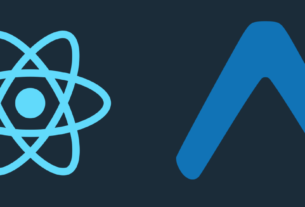A Grand Introductory Course on Environmental Engineering with a trace of Artificial Intelligence in 2021
What you’ll learn
- Heavy Metal Removal From Industrial Wastewater using Low Cost Adsorbents
- Sources of Heavy Metals and Introduction to Adsorption
- Types of Low cost Adsorbents for Heavy Metal Adsorption
- Types of Adsorption and Outline to Low Cost Adsorbents
- Role of Artificial Intelligence in reshaping the water sector
- Protection of drinking water sources
- Role of Artificial Intelligence to detect water leaks
- Practical Example of an Environmental atlas – an interactive map to track environmental changes
Requirements
- You must be a environmental engineering student in order to learn this course or you must be studying the subject in your college or university or have studied this one – in depth.
- Prerequisite: As this is a series-based crash course, first, enrol in “Crash Course on Civil Engineering and AutoCAD: Part 1”, “Crash Course on Civil Engineering and AutoCAD: Part 2” and then join Part 3 to avoid any kind of confusion. This will help you to fully understand this course which serves to be a direct sequel to the concepts taught from the previous series of courses.
Description
This incredible series-based crash course takes an amazing turn here in Part 3 as “New-age Environmental Engineering & Artificial Intelligence” concepts are taught by Digital Marketing Legend “Srinidhi Ranganathan” and Narmadha.M.
Environmental Engineering is a professional engineering discipline that takes advantage of specific scientific topics such as chemistry, biology, geography, geology, hydraulics, hydrology, microbiology, and mathematics to create solutions that will preserve and also improve the health of living organisms and increase environmental quality. Environmental engineering is a civil engineering, chemical engineering, and mechanical engineering sub-discipline.
Environmental engineers research the environmental impact of technological advances, tackling local and global environmental issues such as acid rain, global warming, ozone depletion, water pollution, and air pollution from vehicle exhausts and industrial sources.
Environmental engineers ‘ job prospects are outstanding. Between 2021 to 2024, the sector is expected to grow by 25 percentage, faster than the average for all occupations. Some development will be fuelled, especially in Western states, by the need for water reclamation projects that increase water resources.
In this amazing course, we will learn the following:
- Heavy Metal Removal From Industrial WasteWater using Low-Cost Absorbents. This includes the topic of heavy metals, the environmental impact of heavy metals, conventional methods etc.
- Sources of Heavy Metals and Introduction to Adsorption, Sources of heavy metals and their cycling system in the soil-water-air organism ecosystem etc.
- Types of Adsorption and Outline to Low-Cost Adsorbents – Insights on Physical Adsorption, Chemical Adsorption, Low-Cost Adsorbents etc.
- Role of Artificial Intelligence to detect water leaks and much more.
We will also look at a very real and practical example of an environmental atlas – an interactive map to track environmental changes across the globe that will tend to make the course fun, engaging and interesting – at the same time.
Enroll Now and let’s start booming.
Let’s get busy and start learning this with utmost zeal.
Who this course is for:
- Civil Engineering students
- Environmental Engineers
- Students who have studied or studying Environmental Engineering (B E) or (B Tech students
- Anyone who is passionate to learn environmental engineering subject.
- Environmental Engineering Subject Trainers




